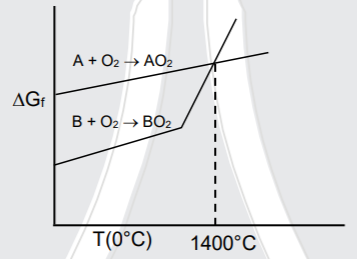Which cation in the given pair will be discharged first during electrolysis under similar conditions ?
H+andCu2+
To determine which cation will be discharged first during electrolysis between H+ and Cu2+, we can follow these steps:
Step 1: Understand Electrolysis
Electrolysis involves the movement of ions in an electrolytic solution towards electrodes. The cathode is negatively charged, attracting positive ions (cations) from the solution.
Step 2: Identify the Cations
In this case, we have two cations:
- H+ (Hydrogen ion)
- Cu2+ (Copper ion)
Step 3: Determine the Discharge Process
At the cathode, the cations will gain electrons (reduction) to become neutral atoms. The process can be represented as:
- For H+:
2H++2e−→H2(g)
- For Cu2+:
Cu2++2e−→Cu(s)
Step 4: Compare Standard Reduction Potentials
The likelihood of a cation being discharged can be predicted by comparing their standard reduction potentials. The standard reduction potential indicates how easily a species can be reduced (gain electrons).
- The standard reduction potential for Cu2+ is +0.34 V.
- The standard reduction potential for H+ is 0.00 V.
Step 5: Conclusion
Since Cu2+ has a higher standard reduction potential (+0.34 V) compared to H+ (0.00 V), Cu2+ will be discharged first during electrolysis.
Final Answer
The cation Cu2+ will be discharged first during electrolysis under similar conditions.
---
Electrolysis involves the movement of ions in an electrolytic solution towards electrodes. The cathode is negatively charged, attracting positive ions (cations) from the solution.
In this case, we have two cations:
- H+ (Hydrogen ion)
- Cu2+ (Copper ion)
At the cathode, the cations will gain electrons (reduction) to become neutral atoms. The process can be represented as:
- For H+:
2H++2e−→H2(g)
- For Cu2+:
Cu2++2e−→Cu(s)
The likelihood of a cation being discharged can be predicted by comparing their standard reduction potentials. The standard reduction potential indicates how easily a species can be reduced (gain electrons).
- The standard reduction potential for H+ is 0.00 V.
Since Cu2+ has a higher standard reduction potential (+0.34 V) compared to H+ (0.00 V), Cu2+ will be discharged first during electrolysis.
The cation Cu2+ will be discharged first during electrolysis under similar conditions.
Topper's Solved these Questions
- ELECTROLYSISBOOK - ICSECHAPTER - ELECTROLYSISEXERCISE - QUESTION FOR PRACTICE ON EXAMINATION PATTERN
39 Videos
- ELECTROLYSISBOOK - ICSECHAPTER - ELECTROLYSISEXERCISE - QUESTION
3 Videos
- ELECTROLYSISBOOK - ICSECHAPTER - ELECTROLYSISEXERCISE - QUESTIONS (fill in the blanks )
1 Videos
- CHEMISTRY-2015BOOK - ICSECHAPTER - CHEMISTRY-2015EXERCISE - SECTION-II (40 Marks) Attempt any four questions from this Section.
49 Videos
- METALLURGYBOOK - ICSECHAPTER - METALLURGYEXERCISE - UNIT TEST PAPER 6 - Metallurgy (Select the correct answer from the list A,B,C & given in each statement.)
5 Videos
Similar Questions
Which cation in the given pair will be discharged first during electrolysis under similar conditions ? Fe2+andCu2+
View SolutionWhich cation in the given pair will be discharged first during electrolysis under similar conditions ? H+andNa+
View SolutionWhich cation in the given pair will be discharged first during electrolysis under similar conditions ?
Na+andMg2+
View SolutionWhich cation in the given pair will be discharged first during electrolysis under similar conditions ?
Cu2+andAg+
View SolutionWhich cation in the given pair will be discharged first during electrolysis under similar conditions ? Fe2+andZn2+
View SolutionWhich of the following pairs of gases will have identical rate of effusion under similar conditions?
View SolutionWhich of the following pair of gases will have same rate of diffusion under similar conditions?
View SolutionSelect the correct answer from the list given in brackets :
An aqueous electrolyte consists of the ions mentioned in the list, the ion which could be discharged most readily during electrolysis. [Fe2+,Cu2+,Pb2+,H+]
View SolutionYou are provided with solutions of sodium hydroxide and ammonium hydroxide. How would you identify each cation in the following pairs of cations which are provided in separate test tubes as solutions?
Cu2+ and Fe3+
View SolutionA can reduce BO2 under which conditions.

View Solution
